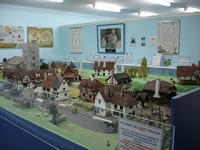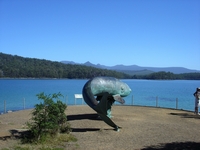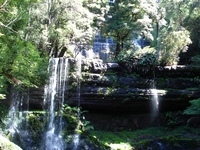Australia So Much to See



The
The extensive view from the top of
Near Huonville, we found an amazing
set of models of historic English buildings complete with people in detailed period dress. This is all the more amazing as they
were constructed in detail by John Palotta, who had limited use of only three fingers on one hand due to having been incapacitated
by polio. The project was undertaken over a period of twelve years. There was also a scale model railway with a
Bavarian village constructed by a German enthusiast.
Fish farms were in the channel looking towards
Geeveston
is a town of wood carvings. Carvings depicting pioneers, together with details about each personís life, can be seen outside
of the shops and businesses.
Logs floated down the
Driving up into the Hartz mountains
we looked across forests where taller dead trees showed above the treetops. This was similar to what we had seen in other areas,
and explanations ranged from past fire damage to a reducing rainfall.
We followed forestry tracks away from the main roads
in a number of areas. While driving through forestry tracks south of Geeveston, we had lunch high on Coal Hill, with vistas
east the
We didnít take the four to five hour walk to the


